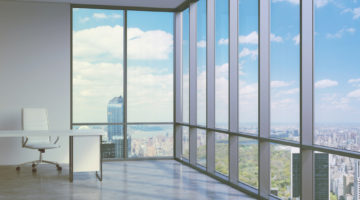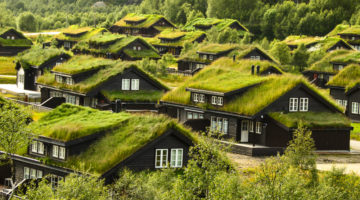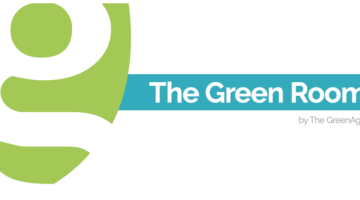
A Buyer’s Guide to choosing the right LED bulb
If you have been a regular follower of TheGreenAge blog, you will know that we are huge supporters of the LED lighting revolution.
Not only do LED lights offer up to 90% energy savings compared to traditional halogen or incandescent bulbs, they also have a vastly superior life span – lasting 10,000s of hours compared to a traditional bulb which may last only 1,000 hours.
 Even comparing LED bulbs with the older style CFL low energy lighting there are clear advantages – as you flick on the light switch, an LED light will instantly offer full illumination, while the CFL would still be warming up. LED lighting can also be manufactured to produce a range of different colour temperatures and quality of light (known as colour rendering).
Even comparing LED bulbs with the older style CFL low energy lighting there are clear advantages – as you flick on the light switch, an LED light will instantly offer full illumination, while the CFL would still be warming up. LED lighting can also be manufactured to produce a range of different colour temperatures and quality of light (known as colour rendering).
Now while the benefits of LED lighting are now fairly well recognised, what a lot of consumers don’t understand is that LED lights vary massively in quality.
The majority of LED lighting manufactures all promise unparalleled performance, in terms of lifespan and the quality of the light the bulb produces, but they can’t all be right can they?
Heat Dissipation
One of the most telling aspects to a LED bulb when it comes to quality is how well the bulb dissipates heat.
A common misconception is that LED bulbs don’t get warm, however this just isn’t the case. They don’t get nearly as hot as incandescent bulbs, but since power goes into the LEDs, they do produce heat and this must be drawn away from the LEDs.
Unfortunately LEDs can’t radiate this heat away in the same way as an incandescent bulb – instead, the heat needs to be drawn away from the LEDs by a heat sink normally located in the bottom of the bulb. The heat sink absorbs the heat produced and then dissipates into the surrounding environment.
If the heat sink doesn’t fulfil its job correctly, the LED will overheat and most likely burn out. So a badly designed heat sink will be detrimental to the lifespan of the LED bulb, and efficient thermal management is really important to ensure that the LED bulbs last as promised!
There are lots of different designs for heat sinks, which is why the appearance of LED bulbs changes so much between brands. You may be familiar with the metal fins on some LEDs – higher end LEDs will have aluminium fins or ceramic heat sinks. The ceramic fins in many cases can be more effective than any metal heat sink, since they possess lots of tiny pores, which provide an even greater surface area to dissipate the heat from compared to metals. Ceramic heat sinks have a very low thermal capacity, but the highest surface area to maximise heat loss into the surrounding environment.
So in our experience better LED bulbs will utilise ceramics or aluminium, but this alone does not make them a market leader!
Chip Set
Whilst heat dissipation is important – the chip used to convert electricity to light is also really important.
A poor chip will generate more heat, and will therefore not last as long. Better bulbs will use chips from better manufacturers, which generate less heat and convert more energy to light – it kind of goes with out saying you get way you pay for, and this is 100% true with LED lighting, if you buy a GU10 for £3, you should probably question the quality of the chip set used.
Bridgelux for example are world renowned for producing extremely high quality chip sets having worked with the might of Toshiba’s R&D department – and these are found within the Philips Masterspot LED bulbs, which are considered some of the best LED bulbs available in the market.
You are paying for brand a little bit though! You can get cheaper LEDs that function just as well!
Power Driver
The driver regulates the power entering the LED’s, ensuring that the bulb operates optimally and does not overheat. In an MR16, this device will be found in the light switch or in the fitting, because the bulb does not have an inbuilt driver. GU10s have an inbuilt driver and therefore do not need an external device.
In all honesty, if you do decide to make the switch to LED bulbs, we recommend ignoring MR16 spots completely and just installing GU10s even if you have to change the fitting. To swap an MR16 for a GU10 will cost you less than £25 per bulb (including the new GU10 fitting), which you will pay back in just a couple of years based on the energy savings.
Colour Temperature
Unlike traditional incandescent and halogen bulbs that tend to produce a warm white light, LED lights are available in many different colours – this is known as the colour temperature of the bulb. To replicate the colour temperature produced from a halogen GU10, you would need to opt for a warm / daylight coloured bulb. If you prefer the cooler light often associated with office spaces, then you would probably prefer the cool light bulbs. The diagram on the right shows the different types of light available with their equivalent colour temperature.
Lumens – comparing different lightbulb brightness
Aside from the colour temperature, LED bulbs also come with varying brightness’s. Gone are the days when you can compare the wattages of bulbs to distinguish, which bulb will be brighter – instead now you need to think Lumens.
The reason for this is that a 50w halogen GU10 spotlight can be replaced with an equivalent 5w LED GU10 spotlight – the lower wattage is the main reason households can achieve such massive energy savings from LED bulbs – you just need to ensure that the lumens are similar between the two types of bulb to make sure you are going to get the same sort of light intensity.
Colour Rendering
Colour Rendering is the ability for a light source to give a true reflection of the colours of the object it is illuminating. That is a bit of a mouthful, but essentially the higher the colour-rendering index the closer to daylight the bulb is (daylight portrays objects perfectly – it has a CRI of 100%).
If the lights are used a lot, then you want to go for an LED bulb with a CRI of 80+, however if the bulb is just used for emergency lighting for instance it can be sub 80. The higher the CRI of the bulb, normally the more expensive it will be to buy, but if you are into painting for example, you will want to pay more to ensure the bulb has a CRI of 90+ to ensure you are getting a more accurate view of what you are painting.
What about LED spotlights?
Beam Angle
The final thing to consider when buying LED bulbs is related to the beam angle. This is something that you might not have considered before, but if you are swapping from halogen spotlights over to LED’s, it’s actually quite important.
Halogens tend to produce a wider angled light than is suggested on the pack, so simply swapping a 35 degree angle bulb for the equivalent LED will create a very narrow angle of light. If you have a low ceiling or need an even spread of light across the room, it is really important to look for a wide 100+ degree angled LED. If you have high ceilings or need a narrower, focussed light, you should go for a lower angle beam.
Quality is Key
With LED lighting, as with many products, quality is absolutely key. Whilst you may be able to find an LED in the shops for £3 a bulb, chances are that it will produce poor light and pack up within the year. We recommend spending a little more on a quality bulb and getting one that will last for years, give off a quality light and save you money.
Perhaps more important – make sure you shop around and work out exactly what you require. And feel free to call us here at TheGreenAge – we will be happy to help!













This is a really helpful article any anyone who is looking at buying LED Spotlights should read it very carefully. I bought 16 x 5w LED Spotlights from B&Q to replace the 50w Halogens in my kitchen, dining room and lounge. They were seriously lacking in brightness despite claiming to replace a 50w Halogen. I took them all back to the shop and told them why i was returning them and they didn’t listen to anything i said.
If LED is, as we are told and it seems, the future of lighting and a great way of reducing energy, carbon and saving people money, is there such a lack of information about them? Which haven’t done any product reviews and nothing from the government. Until i read this it was basically an expensive and time consuming ‘trial and error’ exercise.
I have two questions;
1) How much bigger than halogens are LED Spotlights? I have recessed fittings in my ceiling and want to make sure any LED’s i buy fit properly.
2) Are LED spotlights dimmable?
Hi Duncan,
I can answer both your questions.
1). They are the same size – I also have recessed fittings in the ceiling of my flat, and these fit perfectly.
2). Some are dimmable and they will always say in the item’s description or on the box (if you are in a store).
Just to say – the top end bulbs are expensive, but they should significantly outlast all your halogen bulbs (think 20 years +), and the savings that they will bring will easily cover the initial expense.
Hope that helps
These are very good tips for buyers.
Unfortunately LEDs can’t radiate this heat away in the same way as an incandescent bulb – instead, the heat needs to be drawn away from the LEDs by a heat sink normally located in the bottom of the bulb. The heat sink absorbs the heat produced and then dissipates into the surrounding environment.
It is well known that Incandescent lighting emit heat out through the glass directed downards which is seen as the least energy efficient of lighting methods. However, The heat sink of LED bulbs sits on the bottom of the LED Bulb directing heat upwards. These two methods of heat direction and dissipation needs to be clarified as they affect the performance of lighting fixtures.
Hi Jameel,
You are right that LED bulbs use a heat sink to dissipate waste heat – any form of lighting gives off at least some heat. I think it is very important to point out that this heat is nowhere near the heat given off by an incandescent or halogen bulb. This has been shown many times in lab tests and we recommend you give it a try yourself. Plug a lamp with an LED bulb in a socket with an Efergy Energy Monitor and see how much energy it uses compared to an equivalent incandescent or halogen. You will be amazed!
Having said this, the quality of the LED bulb will greatly affect the amount of heat given off, and therefore the efficiency of the bulb itself. If you go for a cheap bulb, it won’t last as long, and the heat will not be dissipated as well – that means a hotter bulb, lower efficiency and a shorter life expectancy. Go for a good quality lamp like the Groovebulb!
Regards,
Alan
I Go crazy for LED Bulbs they look just like the old bulbs and give out the same colour i was amazed by them you should check them out
Got myself some wonderful wide beam angle GU10 LED lamps, missus was impressed with the quality of light so we bought some more for the bathroom. Got burnt on eBay buying cheap LED some time ago, they didn’t last more than a few weeks, binned the lot. I could tell straight away these were good quality lamps as they felt heavier then the crap off eBay, oh well live and learn.
With LED lighting, as with many products, quality is absolutely key. Whilst you may be able to find an LED in the shops for £3 a bulb, chances are that it will produce poor light and pack up within the year. We recommend spending a little more on a quality bulb and getting one that will last for years, give off a quality light and save you money.
this is so true for led lights.
unfortunatelly people do not understand the differnce because products looks like the same from outside, but need understand that LED products are not a simple lamp, it is an electronic product that has many secrets in the inside.
Have to check
1. luminous flux
2.Power factore
3. warranty
Always ask for certificates and test report if you want to buy a really good quality LED product.
Thanks for sharing such informative information on LED lighting, it’s really helpful for me. Keep up the good work 🙂
No Problem Ali, honestly making the switch to LED is definitely worth it – much lower bills and the bulbs last so much longer.
This is a good informative blog to a Buyer’s choosing the right LED lighting.while searching led bulbs related information I got one more source which has more helpful information about led bulbs hope this will be helpful to others too.
We need LED narrow beam lights that dim. Do you have a range that will dim?
A useful article about LED lighting, thanks for sharing.
Hi This is an excellent story for a buyer.
I need good light because of eye problems. I have spotlights all over the house. Do LED’s require new electric fittings? What are best LED replacements?
Hi Leanne, this depends on what type of spotlights you have in the existing fittings. With GU10 bulbs you should be okay swapping them over straight to LED and the performance should be similar. If you have MR16 bulbs then making the switch to LED bulbs is going to cause issues in most cases because of transformer / LED bulb incompatibility issues. So the best thing to do is take a picture of the bulb you currently have from the side on – and send this through to us at enquiries@thegreenage.co.uk – we can then advise on the best way to go.
This is one of the most thorough post on buying a LED lighting. I have seen people talk about how CFL is superior over LED. And I am like yes may be in 90’s LOL. Coming to the point, I believe heat dissipation & power driver are the proven feature that helps you choose the best one. If I had to add two things, I would think budget and cooling requirements would also be on the list. But, this post is definitely an eye opener
Could you recomend the type of led fitting / bulb type, colour, angle & number required. in a low ceiling cottage kitchen i am refurbishing —- 8m x 3m. Many thanks. Peter .
If they are recessed in the roof we tend to suggest GU10. They look clean, they also help because the fitting doesn’t make the ceiling even lower! Also you can get a huge variety of LED bulb to suit your requirements.
A very good article on LED lights. Experience has taught me that knowing which questions to ask is so important and your information has helped alot with that. One more question: We have a large kitchen/diner with 12 bulbs. Can I replace old Halogen GU10s with new LEDs gradually as the old ones finish, or do I have to replace all 12 at the same time?
Thanks Wendy, you can replace as you go – but remember you get energy savings the moment you switch a halogen with an LED, so worth swapping ASAP!